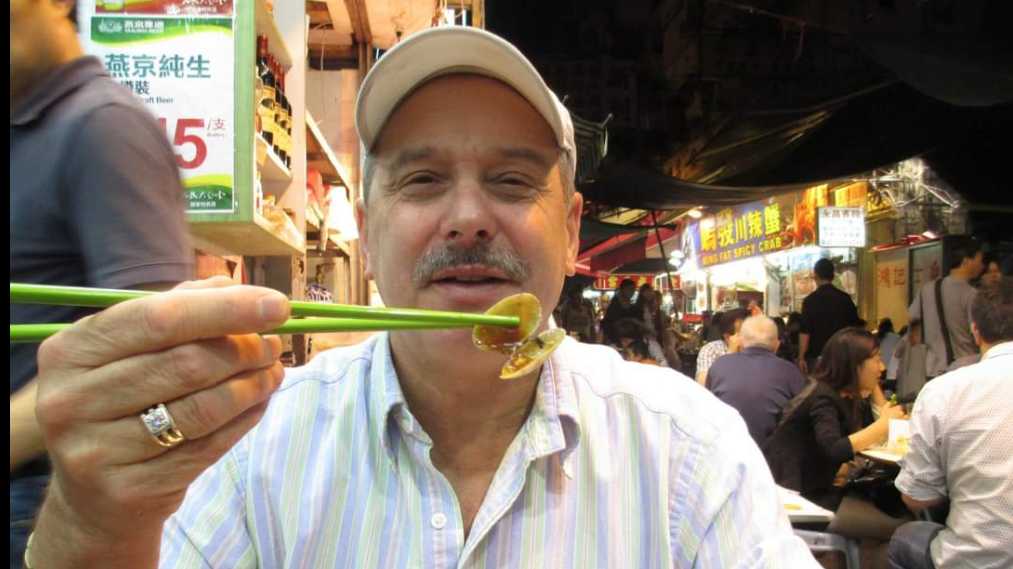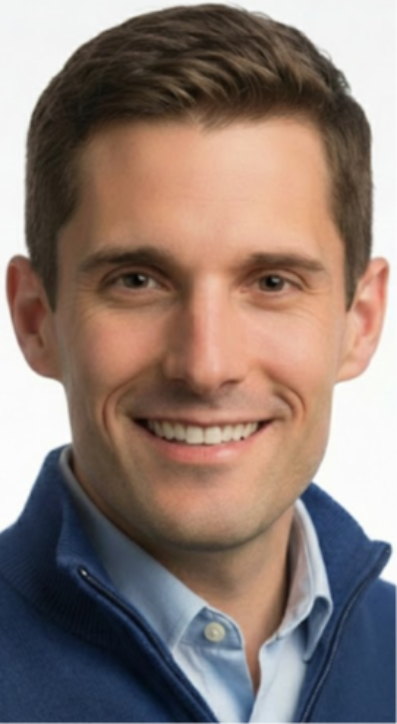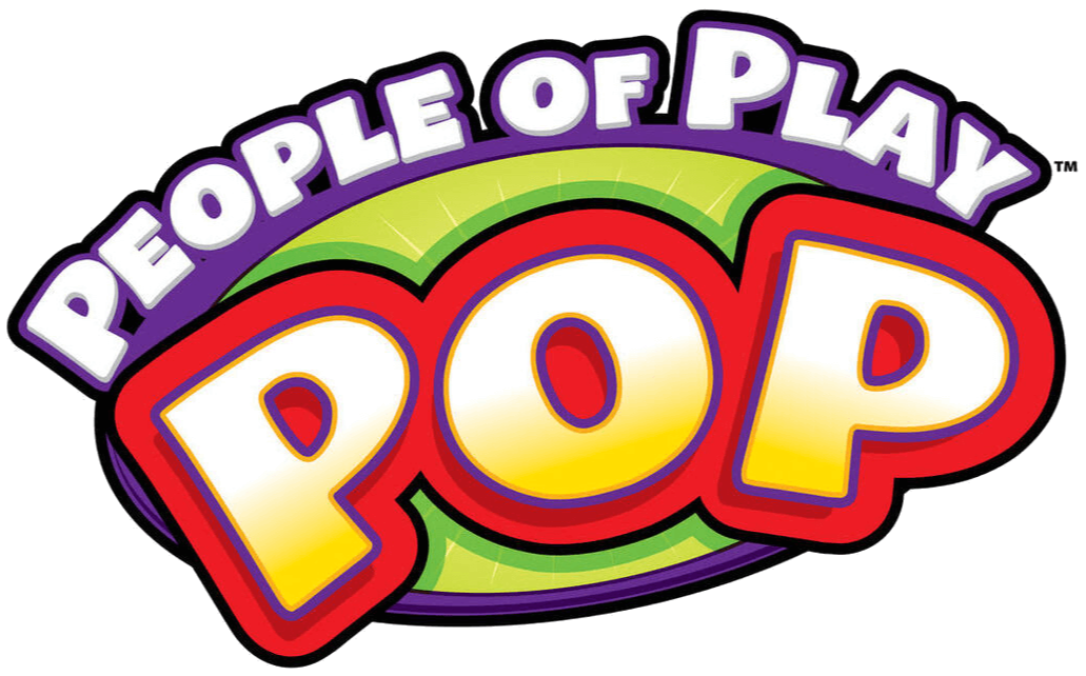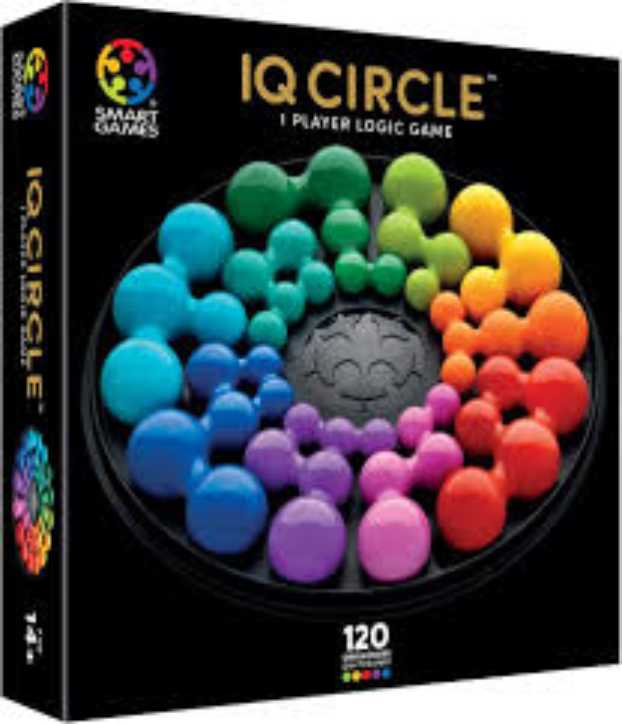Mark Chernick Shares the History, Evolution and Development of Compounds in China
by The Bloom Report | 03 Mar 2022
Industry Commentary, Op-Ed

The Genesis of Compounds
As a principal developer of unusual compounds for many years during my time with Play Visions, I was fortunate enough to become involved in this unique category going back to 1987.
In the early to mid 80’s, Taiwan was the principal producer of toy products worldwide, with toy manufacturing from Korea and Japan to Taiwan, always following the lowest cost of labor along with other necessary elements, infrastructure, transportation and logistics and other factors.
It was during this time period that the first compounds were originally designed and introduced to the toy world in the form of the first slimes.
One major exception to this was Play Doh, that came out in the 1950’s.
I first started going to trade shows in Taiwan in the mid 80’s and that was where I first encountered this newly developed category.
This was when TPR (Thermoplastic Rubber) first entered the toy world in a significant way, and this raw material has now become and has been for years a major staple material for making a broad variety of toy products.
The first TPR products were very limited, the first one that gained notoriety was the Water Wigglie, which was an empty elastic TPR skin that was filled with water and when held in one’s hand would slip out of the hand. Our first creative development of this product was to make the skin transparent so that you could put objects inside that would be visible to the user, such as glitter, mylar, plastic 3D icons, and more. This product has now become an evergreen product and is still very viable in the market.
The importance of this initial TPR product was that this spanned the imagination and creativity of the first Taiwanese chemists, inspiring them to begin creating other TPR items to put into the market.
There were originally three Taiwanese companies that started this category, two of which are still in business in China. The third person is now retired.
For obvious reasons, I won’t name specific companies nor persons.
Two of the three were self-taught chemists. The third had a Ph.d in chemistry, but he focused mainly in developing compounds for the promotional industry, and also cooperated with the other two factories in helping them develop compounds for the toy/retail industry, this factory I will refer to as Factory A.
Factory B and C began developing various compounds that were developed into toy products for many toy companies and importers worldwide.
In the late 80’s and early 90’s Factory A and Factory C moved their operations into Southern China due to rising labor costs in Taiwan, while Factory B remained in Taiwan and is still there to this day.
By this time I had started doing business with all three factories and over the years became personal friends with all three. No other western toy companies had formed this type of relationship with any of them at that point in time.
When the two Taiwanese factories moved to Southern China, only one owner…Factory C also moved into Southern China, Factory A, that produced promotional items, the owner remained in Taiwan, but opened a factory in Southern China to produce his formulations.
So…Factory A and Factory C, when they moved their manufacturing operations into Southern China, they brought a number of their Taiwanese staff and factory workers with them to China to set up the factories and start production.
As well, they hired many local people in China to work in the factories and also with their staff in their Hong Kong offices. In those days, few westerners ventured into China, they did their business with the factory’s offices in Hong Kong.
This is one mistake these factories made that has now played out all over China in the evolution of compound development inside China.
Over a period of time, the local workers in their China factories learned how compounds were designed and produced.
As well, their local Hong Kong staff learned how to manage this type of business and also who their customers were.
At this point, it is important to understand the complexity and importance of the involvement of Taiwan Trading companies that were previously doing their business in Taiwan but now had to migrate physically to China and set up their offices there.
These Taiwanese trading companies knew the owners of the three factories and would become key players in exposing their compound materials to outside buyers and also showing their products at trade shows mostly in Hong Kong in the 90’s and then later on in the Canton Fair in the 2000’s.
As the Chinese factory workers learned how to make the compounds and the Hong Kong staff of these two factories learned how to manage the business and who the customers were, they eventually branched out and set up their own compound factories, thus competing with the original Taiwanese factories.
Today, compound manufacturing to this day in Southern China are all evolved from that beginning. They all have the original Taiwanese connection. As well, some China factories went out and hired Taiwanese chemists to develop new materials for them. In the beginning there were only one or two…now there are many more, and rather than develop products for one factory as they did in the beginning, eventually they went independent and would and still do offer their new compound formulas to a myriad of Southern China factories and the highest bidder gets the product.
Essentially over time, these Taiwanese chemists learned how to “license” their compound creations to various compound factories and that is a strong component of compound development in China currently.
So as you can see, even today, the major percentage of all compound development in China originated by independent Taiwanese chemists.
Over time, as prices have become higher in Southern China, the Taiwan Trading companies set up operations in Yiwu and Ningbo, and in concert with the Southern Taiwanese chemists they algo began producing compounds in Eastern China, where now there is a number of factories in that region that also produce compounds. Thus, today, compounds are produced and available in the key toy manufacturing regions in China.
The community of compound factories in China is very small, and these are usually very small factories, with less than 100 factory workers, sometimes much less.
Safety First
The manufacturing of compounds is a very complex process for many reasons that I will describe below.
First off is the safety aspect. As compounds consist of many chemical raw materials, they must all comply with legal safety standards. To complicate this, many countries have different requirements for safety standards and in many case some compounds can only be marketed to certain countries and cannot be marketed to other countries.
A prime example of this is the chemical Boron which is a prime component of “slime” compounds.
European countries and Canada have very strict Boron requirements, this limits the use of Boron in all compounds.
Some unscrupulous factories get around this by using a particular raw material that actually “has “Boron in it, but is not listed in the ingredients, thus, it can be “hidden” inside the compound and not be known to the public nor the safety laboratories, as the type of testing that would be required to discover this is not required. For this reason, it is always best to work with a compound factory that you know is honest and reliable and won’t try to evade this requirement for safety standards regarding the use of Boron.
Other safety concerns exist as well.
If the compound is light enough and the particulate matter is very small, even invisible to the naked eye, it can become an inhalant during play, such that the user can actually ingest the material into their lungs without being aware of this.
Binding agents can prevent this from happening. The use of binding agents effectively make the material heavier thus preventing it from becoming airborne.
Allergens are also important to be aware of. There is a long list of chemicals that can and are used in compounds that can affect people susceptible to allergic reactions. This is easily avoided by learning to read and understand chemical reports supplied by the compound factories.
Lastly is bacterial consideration. Bacteria can and does grow in many compounds, more so in water based compounds like slimes, but can also grow in oil based compounds. There are numerous anti-bacterial agents that can be added to compounds to prevent this, but that can also alter the consistency of the material. All of this needs to be considered when developing a new compound.
One should always look at the factory MSDS and TRA reports, but even with that, one has to have an intimate knowledge of what chemicals to recognize that might have safety concerns, and many toy companies don’t always have this set of knowledge.
Many toy companies just see a compound material and package it and sell it without fully understanding what’s really inside of it chemically
Shelf Life is Critical
In addition to safety testing, a key challenge in the development of compounds is shelf life. One can develop a compound and maybe it is good for 4-6 months, but then it will deteriorate to the point where its originally intended function is no longer there.
For this reason, compounds must be “age tested” thoroughly, and there are ways to do this over time, and as well there are “accelerated methods” to determine the actual shelf life of a compound.
There is a very good example of this. A few years back, a new compound came into the market and was truly a remarkable material, but when exposed to air, within a few days to a week, it would dry out and disintegrate. A lot of toy companies worldwide saw this product, and jumped all over it, and placed significant orders for this material.
I saw this material and had great interest in it, but realized quickly that it was water based and not oil based and that was why it deteriorated quickly. We hired a chemist to try to change this to an oil base material, but it was physically impossible, so we abandoned it.
I warned some other toy companies of whom I have a friendly relationship with to not buy the product due to its short shelf life, but was ignored as they all thought they could sell a lot.
Months later I got the calls from them telling me they should have listened to me as they had to throw out thousands of units.
The point here, is that compound shelf life is a critical component in the development of compound materials.
Heat and cold are other important factors that affect compounds. When shipped in summer months on container ships leaving China, the heat inside a container can get up to 160 degrees Fahrenheit, thus, is very important to know that a compound can withstand such temperatures for extended periods of time. The reverse is also true, cold temperatures or freezing can also cause deterioration in compounds.
One solution to this is to demand your compound containers be stored “below deck”, thus avoiding extreme temperatures being exposed directly to the sun during transport.
What Toy Companies Don’t Understand About the Compound World in China
This is a very fascinating topic.
At the risk of sounding self serving, there are very simplistic reasons why the toy industry sees very few to no truly unique compounds from the larger toy companies worldwide.
One reason is history. They do not have the history of knowing the individuals that started this industry, how it evolved to how it is today, and how to find and work with these small factories and chemists.
The key word is trust, in which I will illustrate with the example below.
We all know that copies are an endemic problem in the toy industry, and compounds are no exception.
The original Taiwanese factories I mentioned earlier in this article, and the chemists largely exist in Southern China, and it is a small community, and they all know each other.
During the day, they compete heavily with each other, but at night, they gather socially to drink and sing in the local karaoke bars in the Dongguan region in Southern China.
They often share information on customers, brag about whom they’re working with, what products they are shipping, what quantities, what’s going on elsewhere and other factors, all in part in an alcohol infused environment.
As I have known these people for decades, when in China they always invited me to their social gatherings, because they learned over the years that they can trust me. The information I have gleaned from listening to them over the years, has been a huge part of the reason that we have always had access to unique and new compounds before anyone else. They know we don’t take their materials to other factories to copy.
In the dozens or times I have been at those social gatherings, I have never seen another westerner invited, I was the only one allowed on premise.
As an example of how information spreads amongst them, once I was talking to two of them, one of which said to the other, “I just produced a lot of samples of a new compound I have for Toy Company XYZ, and I think they are going to buy a lot”, whereby the second guy said, “I know, they had their
in- house employee that picked up your samples brought them to my factory to see if I could give them a better price”.
The point here is two fold. There are no secrets in China, and secondly, these larger toy companies that do this, have created over the years an atmosphere so heavy with mistrust, that these compound factories just don’t trust them any more. In fact, they brag about the fact that when they have a larger toy company’s employees coming to visit their factory to see what’s new, they hide everything.
When we go to visit the factories, the drawers are flung wide open and we are shown everything.
For this reason, Play Visions has introduced more new unique compounds in the market in the last 10 years than all the other toy companies combined. And it will take a long time for those toy companies to regain the trust of the compound factories and chemists, if ever.
There is another reason that the most all toy companies lack access to compound factories and chemists.
Typically, larger toy companies have their own staff and office in Hong Kong, or in Southern China, but are staffed by local Hong Kong Chinese people, or Southern Chinese people, and use this staff to interact with the compound factories most of whom have a strong Taiwanese component or connection.
Therein lies the problem.
There is a historical mistrust between Hong Kong Chinese, Southern Chinese and the Taiwanese people.
Simply put, they don’t trust each other.
The fact that the larger toy companies use these staff to interact with Taiwanese connected factories, is their lack of understanding of this key issue.
If we need to interact with a compound factory outside of doing it directly, we always work with a Taiwanese agent. We never do so with a local Chinese agent whether from China or Hong Kong.
The Taiwanese have a cultural trust amongst themselves that cannot be understood nor overcome by using Chinese people to interact with them. Certainly there are always exceptions to this, but for the most part is very true.
The Process of Compound Development
Making and creating truly unique compounds is a very complex process and takes time.
First of all, it is very difficult to develop a new compound that is unique enough from what is already in the market.
Then one has to consider the safety and shelf life aspects of the final product.
Aside from that, compound development is somewhat like making a cake, to get it just right takes a lot of trial and error to get it the way you want it, and once you reach each stage, you have to shelf life test it, and eventually the final safety testing.
Most compounds are unique in their tactile appeal. Touch is one of the most compelling basic elements of being human. Every human responds to the sense of touch. We touch everything in the world, and touch reaches inside of a basic human need.
You’ll notice when you have a new compound how people react to it. Do they touch and manipulate it for 2 minutes, or for an hour? The answer to that will tell you if you have something or not.
Aside from seeing and being exposed to new compounds that chemists and compound factories come up with on their own is the creation of custom compounds.
What I mean by that, is that sometimes we will go to a chemist we know and trust with our “wish list”.
We did this with our compound Floof, which has been a very popular material the past few years.
We recognized there were no super light compounds in the market that had certain features.
We went to the chemist and told him we wanted a compound that had the following features:
- Super light but not inhalable
- Could be molded
- Would show super fine details when molded
- Would not come apart easily after being molded
- Could pass safety and shelf life requirements
- Could be colored with pigments without affecting its character
- Had no objectionable odor
- Could be scented
So, we gave the chemist this challenge. Within 3 months we had the first version, but was too heavy. A month later we received the 2nd batch of samples, but it wouldn’t hold a mold shape.
And on and on, until after about 8 months after a lot of trial and error, he made it perfectly.
By the time safety and shelf life issues were completed it took a year from the starting point, but, we had a truly unique compound that no one else had.
Supplying Raw Materials to Other Toy Companies
Historically speaking, we have used compounds presented to us or customized for our own marketing purposes, but in the recent past we have changed that perspective as we come into contact with so many raw materials that could be marketed, but one company cannot physically develop and market that many raw materials.
As we have been contacted over the years by many toy companies wanting access to our compound contacts in China, we have now been cooperating with other toy companies with compounds and raw materials and some have subsequently entered the market.
We continue to offer this unique service to other toy companies.
A bit about the author:
Mark Chernick has been manufacturing in China for 35 years and spends 3 months of the year there.
He has been intimately involved in the compound business since the mid 1980’s.
If you have any comments or questions, he can be reached at: markc@playvisions.com, or 425-482-2836, ext 104.
Recent Blogs
Recent Blogs

Industry Commentary, Op-Ed
The Top 25 POP Profiles of 2025

Biographies and Interviews
Ben Krenz Talks Moose Games, The Rise of Kidults, and More!

The Bloom Report
The Bloom Report Issue Archive

Play Through History
The Lives They Lived: Rest in Play Edition 2025

The Bloom Report
Toy and Game People Obituaries - RIP - Rest in Play
See more
Recent Wiki

BOOK REVIEWS
Game Review: Cats & Boxes

PEOPLE
Ana Maria, Founder of The Magical Underland Inc., Rings in the Holidays with a new kind of Christmas Tree

BOOK REVIEWS
Game Review: IQ Circle

PEOPLE
Catching up with Eric Olsen, The Inventor of Flip 7 and Co-Creator of Messy Table Games

BOOK REVIEWS
Book Review: Happytecture by Anna Devís & Daniel Rueda
See more
POP's Got Talent

POP Entertainment
Randy Klimpert Shares his Ukulele Collection

POP Entertainment
Steve Casino Peanut Art

POP Entertainment
Everyone's Talking about POP!

POP Entertainment
Princess Etch - a Multi-Talented Etch A Sketch Artist

POP Entertainment
Joseph Herscher of Joseph' s Machines.
See more
Recent POPcast

Hidden Role: The Brains Behind your Favorite Games
Connie Vogelmann designed Apiary & Wyrmspan!

Hidden Role: The Brains Behind your Favorite Games
Bob Fuhrer... Is THE Crocodile Dentist!

Hidden Role: The Brains Behind your Favorite Games
Tom Dusenberry... Bought Atari, Wizards of the Coast, and Avalon Hill!

Hidden Role: The Brains Behind your Favorite Games
Matt Leacock created Pandemic... the game!

Hidden Role: The Brains Behind your Favorite Games
Scott Brown and Tim Swindle... are Launching a New Sport!
See more
POPDuos

POPDuos: Interviews with Legends and Leaders
POPDuo: Richard Dickson, Mattel’s President & COO, and Kedar Narayan, Young Inventor Challenge AMB

POPDuos: Interviews with Legends and Leaders
POPDuo: Will Shortz and Josh Wardle

POPDuos: Legends and Leaders Explore Creativity
POP Duo: Elan Lee, Co-Founder, Exploding Kittens.and Jeff Probst, Host and Exec Producer, Survivor

POPDuos: Legends and Leaders Explore Creativity
POP Duo: David Fuhrer, MNG Director, Blue Sq Innovations & Shawn Green, past Dodgers & Mets MLB Star

POPDuos: Legends and Leaders Explore Creativity
POP Duo: Bob Fuhrer, Founder, Nextoy and Tom Fazio, Golf Course Designer
See more















